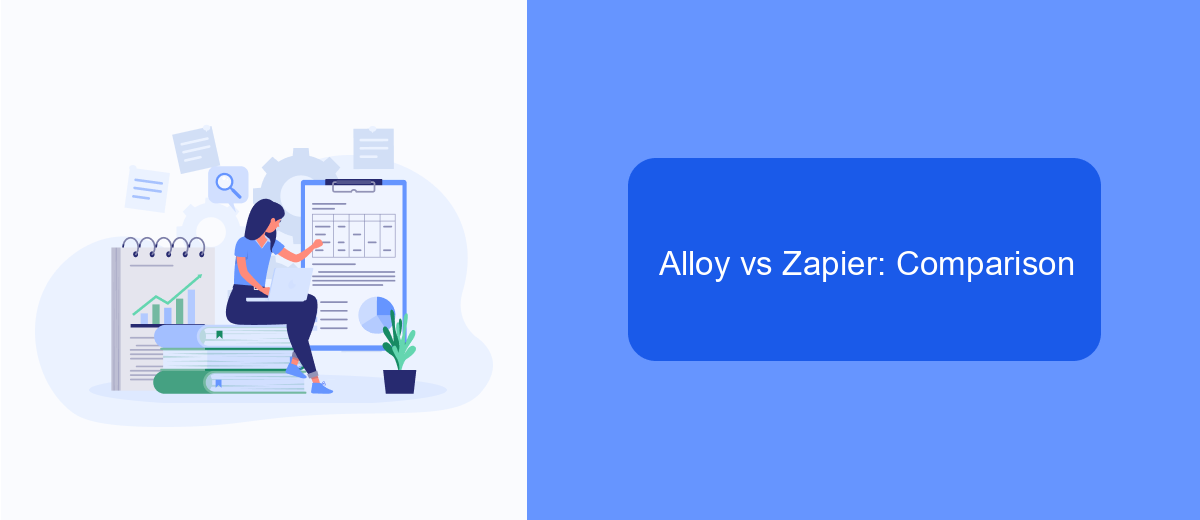When it comes to automating workflows and integrating various applications, Alloy and Zapier are two prominent tools that businesses often consider. Each platform offers unique features and capabilities designed to streamline operations and enhance productivity. This article will compare Alloy and Zapier, exploring their strengths, weaknesses, and ideal use cases to help you determine which tool best suits your needs.
Introduction
In today's digital landscape, automation tools play a crucial role in streamlining business processes. Alloy and Zapier are two popular platforms that enable users to automate workflows and integrate various applications. Both services offer unique features and capabilities, making it essential to understand their differences to choose the right one for your needs.
- Alloy: Known for its robust data integration capabilities and advanced workflow automation.
- Zapier: Popular for its user-friendly interface and extensive app integrations.
- SaveMyLeads: A useful service that can simplify the process of setting up integrations, complementing both Alloy and Zapier.
Choosing between Alloy and Zapier depends on your specific requirements, such as the complexity of your workflows and the number of applications you need to integrate. By understanding the strengths and limitations of each platform, you can make an informed decision that best suits your business objectives.
What is Alloy?

Alloy is an advanced integration platform designed to streamline and automate workflows between different applications and services. It enables businesses to connect various tools and systems without the need for complex coding or technical expertise. By providing a user-friendly interface, Alloy simplifies the process of creating automated workflows, allowing users to focus on their core activities while ensuring that their applications work seamlessly together.
One of the key features of Alloy is its ability to integrate with a wide range of applications, making it a versatile solution for businesses of all sizes. For instance, services like SaveMyLeads can be easily connected through Alloy, enabling automated lead management and data synchronization. This not only saves time but also reduces the risk of errors that can occur with manual data entry. With Alloy, businesses can enhance their operational efficiency and ensure that their various tools and systems are always in sync.
What is Zapier?

Zapier is a powerful automation tool that allows users to connect different web applications and automate workflows without the need for coding. By creating "Zaps," users can set up triggers and actions between apps to perform repetitive tasks automatically, saving time and reducing the risk of human error.
- Select the trigger app and event.
- Choose the action app and event.
- Customize the data flow between the apps.
Zapier supports thousands of apps, making it a versatile solution for businesses of all sizes. For those looking for additional customization and integration options, services like SaveMyLeads can further streamline the process by providing tailored solutions and pre-made templates for specific use cases. This makes it easier to set up complex workflows and ensures seamless data transfer between various platforms.
Alloy vs Zapier: Comparison

Alloy and Zapier are both popular tools for automating workflows and integrating various applications. While both services aim to streamline processes and enhance productivity, they cater to slightly different needs and user bases.
Alloy is known for its powerful data integration capabilities, making it a preferred choice for businesses that require complex data workflows. On the other hand, Zapier is widely appreciated for its user-friendly interface and extensive library of app integrations, which makes it accessible to users with varying technical skills.
- Ease of Use: Zapier is generally easier for beginners, while Alloy may require more technical expertise.
- Integration Options: Zapier offers a broader range of app integrations compared to Alloy.
- Customization: Alloy provides more advanced customization options for complex workflows.
- Support: Both platforms offer robust support, but Alloy often provides more specialized assistance for data-heavy tasks.
For users seeking a balance between ease of use and powerful capabilities, SaveMyLeads can be a viable alternative. It offers straightforward integration solutions and can help businesses automate their workflows efficiently. Ultimately, the choice between Alloy and Zapier depends on the specific needs and technical expertise of the user.
Conclusion
In conclusion, both Alloy and Zapier offer robust solutions for automating workflows and integrating various applications. Alloy stands out with its focus on developers and custom integrations, providing a high level of flexibility and control. On the other hand, Zapier excels in user-friendliness and accessibility, making it an excellent choice for non-technical users who need to set up integrations quickly and efficiently.
For those who seek an additional layer of convenience and automation, services like SaveMyLeads can further streamline the process. SaveMyLeads offers an intuitive platform that simplifies the integration setup, allowing businesses to connect their favorite apps without extensive coding knowledge. Ultimately, the choice between Alloy and Zapier will depend on your specific needs and technical expertise, but leveraging tools like SaveMyLeads can enhance the overall efficiency of your integration efforts.
FAQ
What are the primary differences between Alloy and Zapier?
Which tool is easier to use for beginners?
Can both Alloy and Zapier integrate with any application?
Do Alloy and Zapier offer customer support?
Are there any alternatives to Alloy and Zapier for automation and integrations?
You probably know that the speed of leads processing directly affects the conversion and customer loyalty. Do you want to receive real-time information about new orders from Facebook and Instagram in order to respond to them as quickly as possible? Use the SaveMyLeads online connector. Link your Facebook advertising account to the messenger so that employees receive notifications about new leads. Create an integration with the SMS service so that a welcome message is sent to each new customer. Adding leads to a CRM system, contacts to mailing lists, tasks to project management programs – all this and much more can be automated using SaveMyLeads. Set up integrations, get rid of routine operations and focus on the really important tasks.
